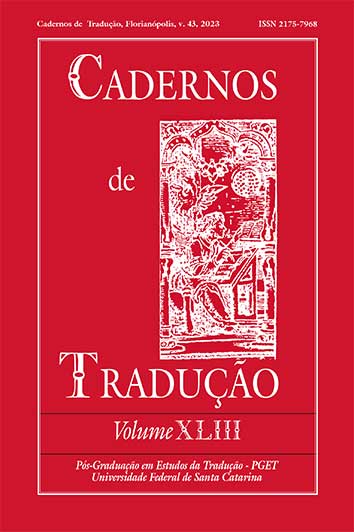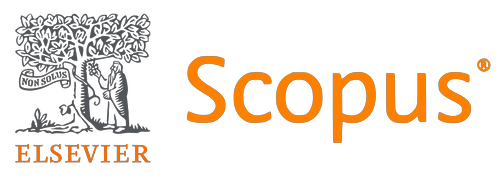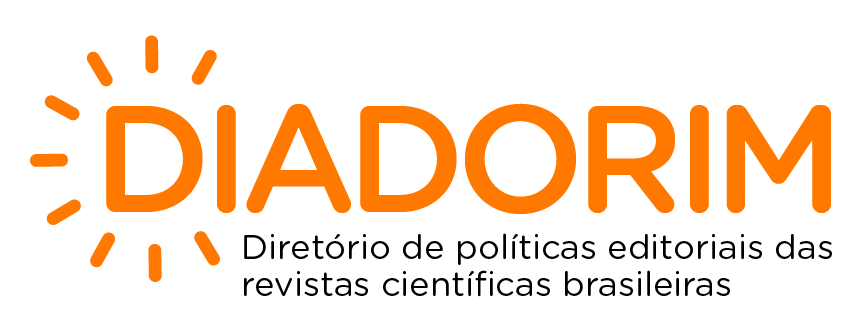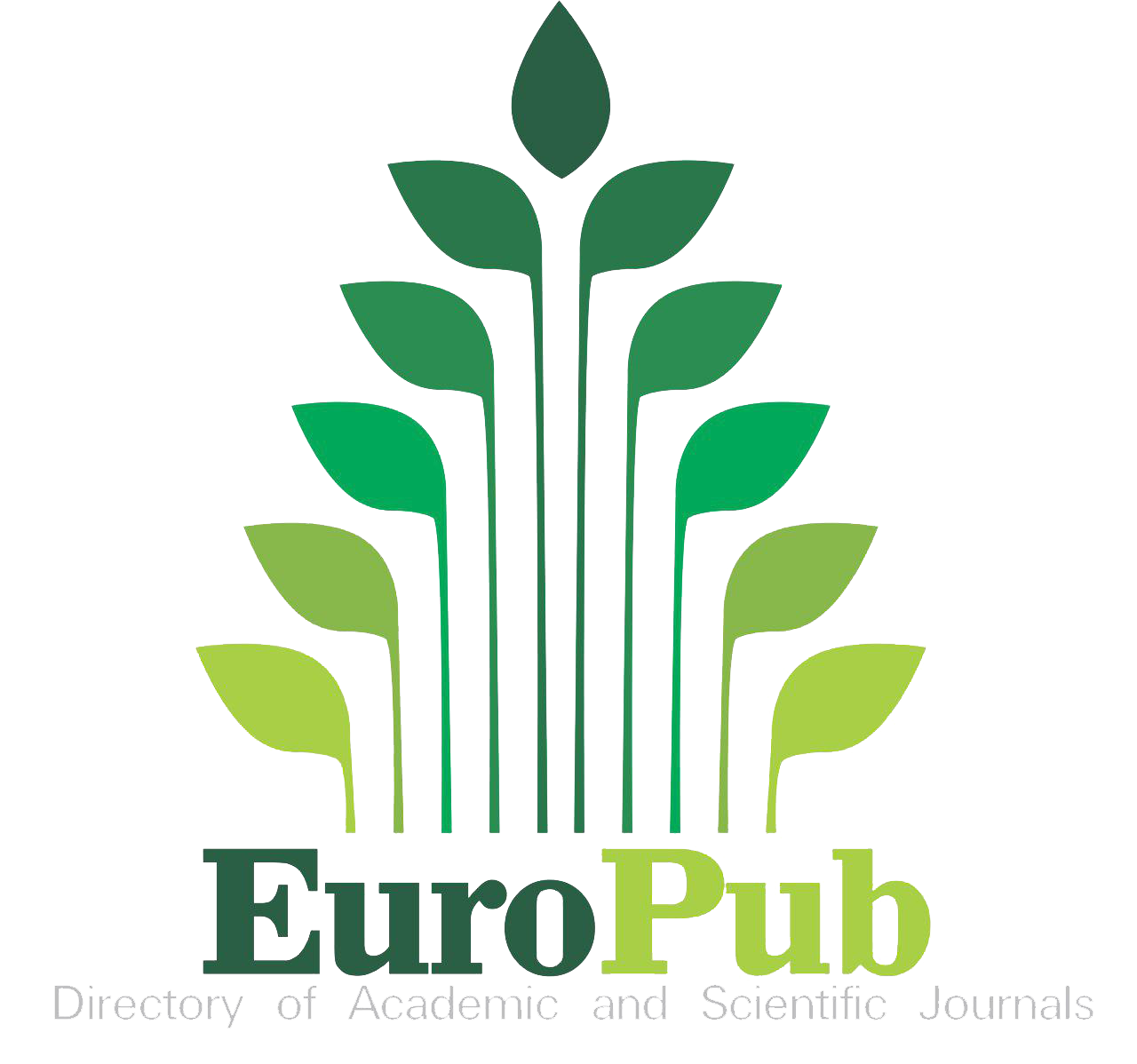Criação de sinais-termo: tratamento e descrição do termo para COVID-19 em língua de sinais
DOI:
https://doi.org/10.5007/2175-7968.2023.e86639Parole chiave:
Morfologia, Covid-19, Língua de Sinais BrasileiraAbstract
O presente artigo versa sobre a criação de sinais-termo em Língua de Brasileira Sinais para a pandemia da Covid-19. Objetivou-se, portanto, investigar e descrever o processo de criação dos novos sinais-termo relacionados à pandemia da Covid-19. Para isso, em função do isolamento social, o campo de pesquisa tornou-se virtual nas plataformas: Facebook, Instagram e WhatsApp. Fundamenta-se na morfologia da Língua de sinais (KARNOPP E QUADROS, 2004). Para a descrição fonética e morfológica Nascimento (2009) e Abreu (2019), sobre o processo de criação de novos sinais termos. A análise focalizou o estudo sobre três sinais-termo, o primeiro a surgir foi o convencionado na China com a referência conceitual equivocada de que a doença era transmitida pelo morcego, por isso foi abandonado. O segundo, é uma convenção universalizada que é “padrão” em países da Europa e do Ocidente. E o terceiro convencionado no Brasil é a variante usada no país.
Riferimenti bibliografici
Abreu, W. C. Processos de formação de sinais: um estudo sobre derivação e incorporação nominal na língua brasileira de sinais-Libras. Dissertação de Mestrado. (Programa de Pós-Graduação em Letras). Universidade Federal do Pará, Instituto de Letras e Comunicação, Belém, 2019. http://repositorio.ufpa.br:8080/jspui/handle/2011/12293.
Babbie, E. Métodos de pesquisa de Survey. Tradução de Guilherme Cezarino. Belo Horizonte: Ed. UFMG, 1999.
Camacho, R. G. “Sociolinguística parte II”. In F. Mussalim & A. C. Bentes (Orgs.). Introdução à linguística: domínios e Fronteiras. 5ª ed, v. 1. São Paula: Cortez, 2013, p. 49-75.
Campello, A. R. e S. “Intérprete surdo de língua de sinais brasileira: o novo campo de tradução / interpretação cultural e seu desafio”. Cadernos de Tradução, 1 (33), 143-167. 2014. DOI: https://doi.org/10.5007/2175-7968.2014v1n33p143.
Costa, M. R. Proposta de modelo de enciclopédia visual bilíngue juvenil: Enciclolibras. Dissertação de Mestrado. Universidade de Brasília. Instituto de Letras – IL. Departamento de Linguística, Português e Línguas Clássicas – LIP. Programa de Pós-Graduação em Linguística – PPGL, Brasília, 2012. https://repositorio.unb.br/handle/10482/13558.
Dimar Show. “Coronavírus em Libras. ‘Brasil já tem 132 casos suspeitos de novo coronavírus’”. YouTube. 29/02/2020. Disponível em: https://www.youtube.com/watch?v=0jfIcXR1KVY&t=4s. Acesso em: 15/03/2020.
Dimar Show de Humor. “Sinal diferente ‘coronavírus’”. Facebook. 03/03/2020. Disponível em: https://www.facebook.com/watch/?v=1312960745545746. Acesso em: 02/04/2020.
de Sá, Fábio [@fabio.ssilva]. “Sinal de Coronavírus”. Instagram. 01/01/2020. Disponível em:
https://www.instagram.com/p/B79qGr_pRIU/?utm_source=ig_web_button_share_sheet. Acesso em: 30/05/2020.
Hayakawa, Claudia. “Sobre o sinal ‘Coronavírus’ em Sinais Internacionais e Libras”. Facebook. 21/03/2020. Disponível em: https://www.facebook.com/watch/?v=245681626587893 . Acesso em: 30/05/2020.
Nascimento, S. P. F. Representações lexicais da língua de sinais brasileira: uma proposta lexicográfica. Tese de Doutorado. Universidade de Brasília. Instituto de Letras. Departamento de Linguística, Português e Línguas Clássicas – LIP. Programa de Pós-Graduação em Linguística. Brasília, 2009. https://repositorio.unb.br/handle/10482/6547.
Faulstich, E. “Socioterminologia: mais que um método de pesquisa, uma disciplina”. Rev. Ciência da Informação, 24 (3), s/p, 1993. DOI: 10.18225/ci.inf..v24i3.566
Ferreira-Brito, L. Por uma gramática de língua de sinais. (Trabalho original publicado em 1995). Rio de Janeiro: Tempo Brasileiro, 2010.
Gonçalves, C. A. Atuais tendências em formação de palavras. São Paulo: Editora Contexto, 2016.
Quadros, R. M. & Karnopp, L. B (Orgs.). Língua de sinais brasileira: estudos linguísticos. Porto Alegre: Artmed, 2004.
UFSCAR - Universidade Federal de São Carlos. “COVID-19 EM LIBRAS: Apresentação”. YouTube. 12/04/2020. Disponível em: https://www.youtube.com/watch?v=wXLnULRkAoE. Acesso em: 30/05/2020.
##submission.downloads##
Pubblicato
Come citare
Fascicolo
Sezione
Licenza
Copyright (c) 2023 Cadernos de Tradução

TQuesto lavoro è fornito con la licenza Creative Commons Attribuzione 4.0 Internazionale.
Autores têm autorização para assumir contratos adicionais separadamente, para distribuição não exclusiva da versão do trabalho publicada nesta revista (ex.: publicar em repositório institucional ou como capítulo de livro, com reconhecimento de autoria e publicação inicial nesta revista).





















































